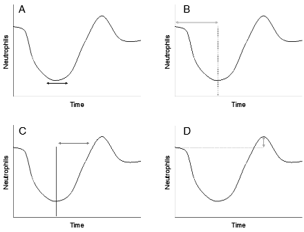Abstract
Population pharmacokinetics and pharmacodynamics PKPD modelling of chemotherapy-induced neutropenia can help with efficacy optimization and toxicity prevention in cancer patients. These medications focus on the fast-growing cells within the body and destroy them. Most of the fast-growing cells in the body are usually cancer cells, but there is an increased chance that certain healthy cells, such as white blood cells could be killed during chemotherapy. Several approaches have been identified for different drugs. Both empirical and mechanist approaches are discussed in this paper. Further, the author identified the pharmacokinetic-pharmacodynamic profile described by Friberg et al. (2003) as the most commonly used. This model consists of five sectors that represent proliferation, maturation, as well as elimination from the circulation of the neutrophils or leucocytes. This review covers these aspects and promotes a full understanding of dose prediction using semi-mechanistic modelling.
Full text article
Authors

This work is licensed under a Creative Commons Attribution-NonCommercial-NoDerivatives 4.0 International License.

